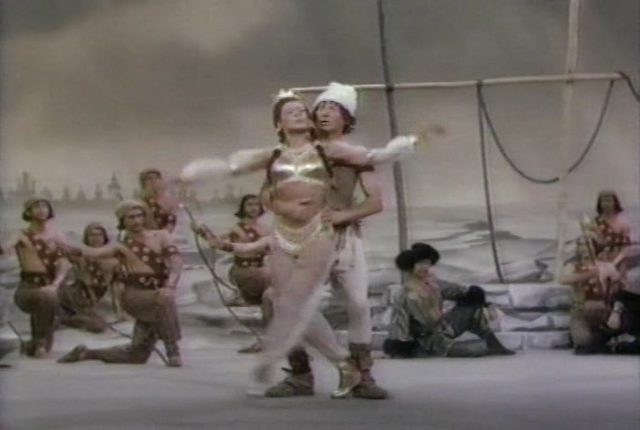By Rachel Straus
There is nothing like a good ballet spoof. At New York City Ballet’s January 21 matinee performance at Lincoln Center, the company danced Jerome Robbins’ “The Concert” (1956). Whether you get the inside jokes about famous ballets, Robbins’s jabs at ballet traditions—the good, bad and the ugly—directly communicate. Many of the high jinks in “The Concert” involve the corps de ballet. They aren’t a sisterhood of synchronous arms and legs, but a bunch of competitive ladies with faulty memories in respect to their steps. The prima ballerina, danced to perfection by principal Maria Kowroski, isn’t satisfied until she is tearing through space, emoting like a diva, and wearing ridiculous headgear (a blue pom-pom hat). Meanwhile the on-stage pianist, Cameron Grant, plays on a dust-covered piano. Dance studios boast some of the most broken down pianos around. These ancient instruments, which have tortured generations of musicians, are too often treated as good places for dancers to put their gear.
As for the male dancers in “The Concert,” they are reduced to porteurs, carrying ballerinas to and fro as if they are store window mannequins. The motivation of the lead danseur, Andrew Veyette, is to kill his wife, Amanda Hankes, and to win the long-legged Kowroski.
“The Concert,” to Frederic Chopin’s piano sonatas, was made more than a half century ago, but its traditions (and relevance) hold fast. Competition between dancers, the primacy of the ballerina, men hauling female dancers above their shoulders: it’s all very 2012. An all-out audience pleaser, “The Concert” is a gem for any mixed bill program that needs a little leavening.
Two years before Robbins made “The Concert,” his younger colleague Michael Kidd choreographed a ballet spoof for Paramount Pictures called “Knock on Wood.” Kidd and Robbins cut their teeth as performers on Russian ballet. Both felt like imposters, being Jewish, not apprenticing to classical dance in their wee years, and failing to cotton to the big fairy tale ballet aesthetic. When Kidd left the ballet world in 1947 and became a sought after dance arranger for musicals, he used his Russian ballet experience to side splitting effect. In “Knock on Wood,” Kidd directed Danny Kaye to duck into a theatre, don a costume of a Slavic hero and ad-lib through a Russian ballet performance to escape from bad guns with guns. Kaye dances the flat-footed fool in some very saggy tights. He’s no aristocrat. Neither was Kidd. “I was never cut out,” he said, “for being the Swan Prince.” You Tube currently carries the Knock on Wood ballet scene. It’s a little over eight minutes long, but it feels like a flash.
Some ballets are meant to be serious, but are best enjoyed as comedy. Such was the case with an excerpt of Jeremy McQueen’s “Concerto Nuovo” (2009). Performed on January 24 for the Dancers Responding to Aids benefit concert at the Cedar Lake Contemporary Ballet Theater, McQueen set his all-female work to J.S. Bach’s “Concerto in D minor for Two Violins.” If ever there was a loaded piece of music in dance, it’s this concerto. Balanchine and Paul Taylor created their masterpieces, “Concerto Barocco,” and “Esplanade,” respectively, to this music.
Young McQueen not only turns Bach’s concerto into background music for his grab bag of steps culled from ballet, modern, runaway modeling and the competition dance circuit, he states in the program notes that “Nuovo” is inspired by Balanchine’s “Concerto Barocco.” McQueen’s homage and convoluted dance phrases are so tasteless they’re funny. The white ruffled mini dress costumes transform the nine hard-working dancers into identical-looking prom queens. With a good editor, “Concerto Nuovo” could amuse more than offend. Dancing funny to J.S. Bach’s concerto holds promise. Some pieces of music bear too much history to be danced straight.
For more dance writing by Rachel Straus go to rachelstraus.com.



